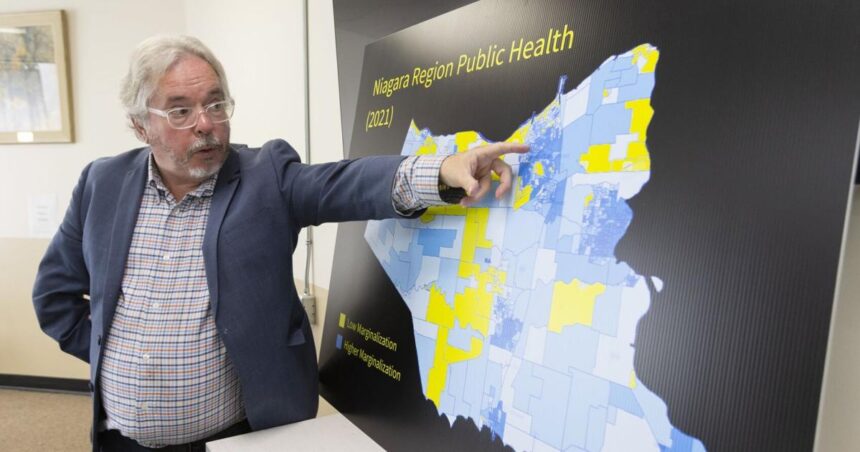I step through the lingering scent of antiseptic and fluorescent lighting that has become all too familiar in my reporting across Canadian healthcare facilities. Today, I’m in Niagara, where the corridors of local hospitals tell a story that statistics alone cannot convey—a region feeling the squeeze of healthcare privatization perhaps more acutely than many others in Ontario.
“My mother waited eight months for a hip replacement that would have been three weeks if we could afford the private clinic,” says Alicia Fernandez, a St. Catharines resident I met in the hospital waiting room. She speaks in hushed tones, as if confessing something shameful about a system that was designed to treat everyone equally. “It’s not right that your bank account determines how much pain you live with.”
The Canadian Union of Public Employees (CUPE) has been raising alarms about this growing disparity. According to their recent assessment, Niagara Region has experienced a disproportionate impact from the expansion of for-profit healthcare services, with patients facing longer wait times for essential procedures while private alternatives flourish for those who can afford them.
Michael Hurley, president of the Ontario Council of Hospital Unions (OCHU/CUPE), tells me that Niagara’s demographic profile makes it particularly vulnerable. “We have an aging population with lower average incomes than the GTA. When services get outsourced to for-profit providers, it creates a two-tier reality that hits regions like Niagara especially hard.”
The numbers support his concern. Ontario Health data shows that diagnostic procedure wait times in Niagara Health System hospitals have increased by approximately 22% over the past three years, while private imaging clinics have expanded their operations in the region.
What makes this particularly troubling is how it affects real people in real time. When I visited Niagara Falls General Hospital last Thursday, I met nurse Deborah Kwan during her break. Fifteen years into her career, she describes a system under mounting pressure.
“We’re losing staff to private facilities that can offer better working conditions,” she explains, absently stirring her now-cold coffee. “But those private clinics cherry-pick the straightforward cases. The complex patients—often elderly, often with multiple health issues—remain in the public system with fewer resources to help them.”
The Ontario government has defended its expanding partnerships with private providers as necessary to address surgical backlogs and improve efficiency. Health Minister Sylvia Jones has repeatedly emphasized that OHIP still covers the procedures, regardless of where they’re performed.
But Dr. Amit Arya, a palliative care physician who splits his time between Toronto and Niagara, offers a different perspective based on his frontline experience.
“When we allow profit to drive healthcare decisions, we inevitably create inequities,” he explains during our conversation at a community health center in Welland. “I’m seeing patients who can’t access timely care because resources are being diverted. Meanwhile, private facilities focus on profitable procedures rather than community needs.”
What’s happening in Niagara reflects broader tensions in Canadian healthcare. A 2022 study by the Canadian Medical Association Journal found that provinces with higher rates of for-profit service delivery saw increased inequities in access to care, with rural and lower-income regions most affected.
The landscape of privatization takes many forms. Independent health facilities performing OHIP-covered procedures, private homecare agencies replacing public services, and the contracting out of hospital support services have all grown in Niagara over the past decade, according to CUPE’s analysis.
For families navigating this changing system, the costs—both financial and human—are substantial. Port Colborne resident James Mackenzie, a former factory worker now caring for his wife with advancing dementia, speaks of healthcare as increasingly resembling a maze rather than a safety net.
“The public homecare hours weren’t enough, so we pay out of pocket for extra help,” he explains. “That’s $2,000 a month we didn’t budget for in retirement. Some months I have to choose between my medications and hers.”
The human cost extends beyond patients to healthcare workers themselves. At a recent CUPE town hall meeting I attended in St. Catharines, personal support workers described increasing workloads as staff positions go unfilled in the public system.
“I used to have time to actually talk with residents,” says Maria Lorenzo, who has worked in long-term care for 22 years. “Now it’s rush, rush, rush. The private agencies bill the government more than I make, but somehow there’s no money to hire permanent staff.”
The Niagara Health Coalition, a grassroots organization advocating for public healthcare, has documented how privatization often begins subtly—contracting out laundry services here, diagnostic imaging there—before expanding into core clinical services.
“It’s death by a thousand cuts,” says coalition coordinator Sue Hotte. “Each individual decision might seem minor, but together they’re transforming our healthcare system away from its founding principles.”
As winter approaches, bringing its usual respiratory illness season, Niagara’s healthcare challenges will likely intensify. Hospital occupancy rates already hover near 100%, with hallway medicine normalized despite promises to end the practice.
What stands out in my conversations across Niagara is not just concern but a deep sense of loss—a feeling that something fundamentally Canadian is slipping away. Healthcare has long been not just a public service but part of our national identity, a concrete expression of how we care for one another regardless of circumstance.
As I prepare to leave Niagara after a week of interviews, I think about Alicia Fernandez’s mother, still recovering from her delayed surgery, and James Mackenzie calculating which medications his household can afford this month. Their stories remind us that healthcare policy is never abstract—it’s intensely personal, determining not just health outcomes but dignity and quality of life.
The debate about healthcare privatization in Niagara and across Canada will certainly continue. But as it does, we would do well to remember that behind every statistic and policy decision are people whose lives hang in the balance, waiting for a system that promised to care for them when they needed it most.






